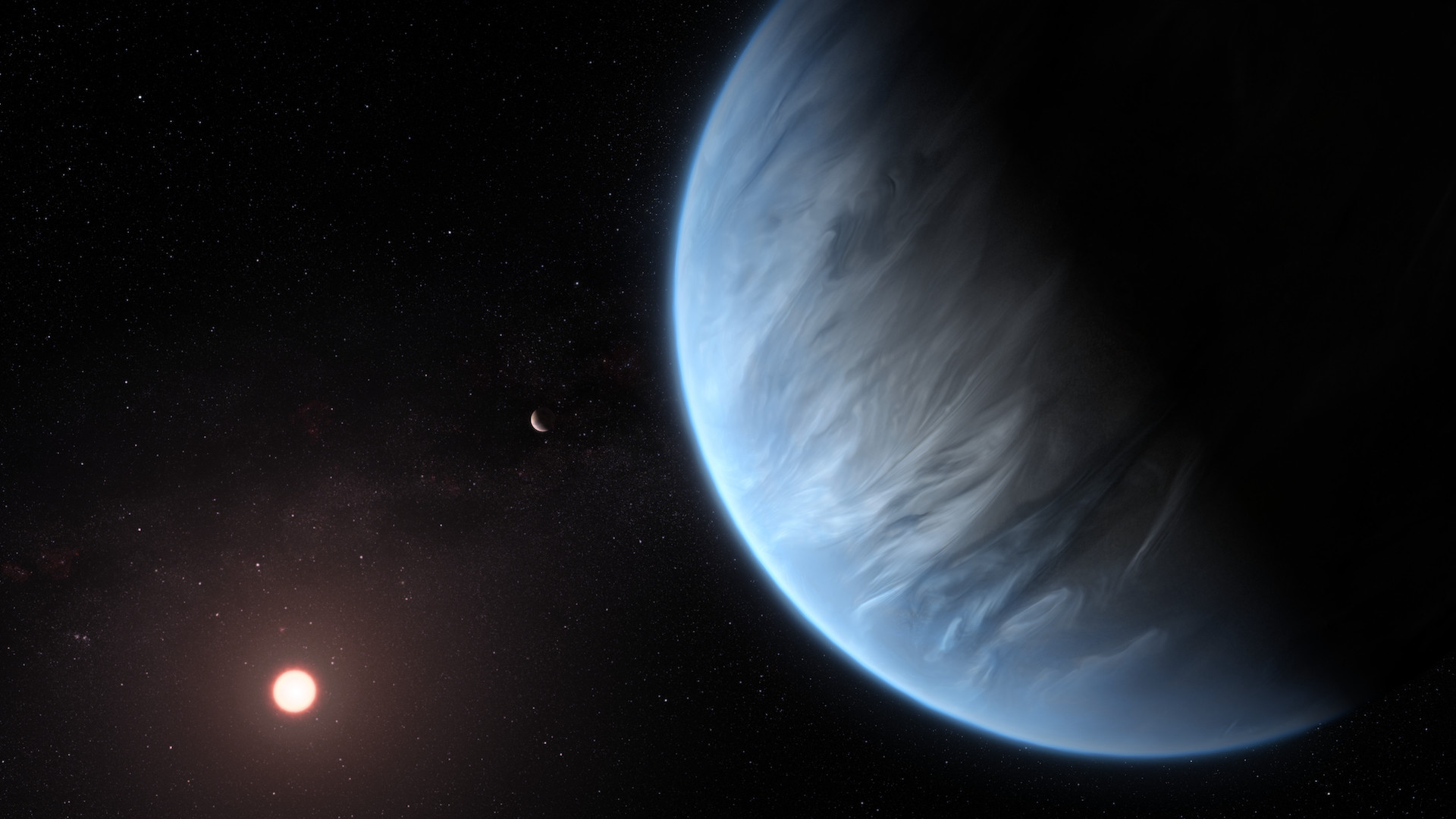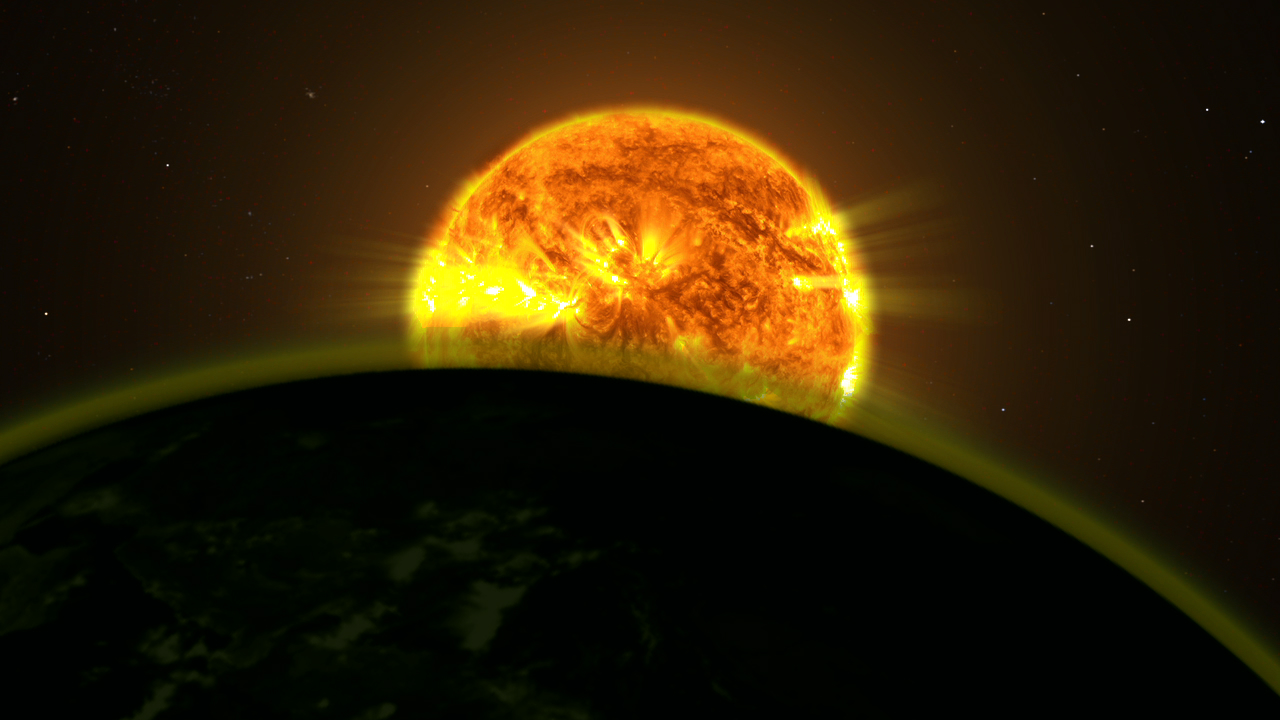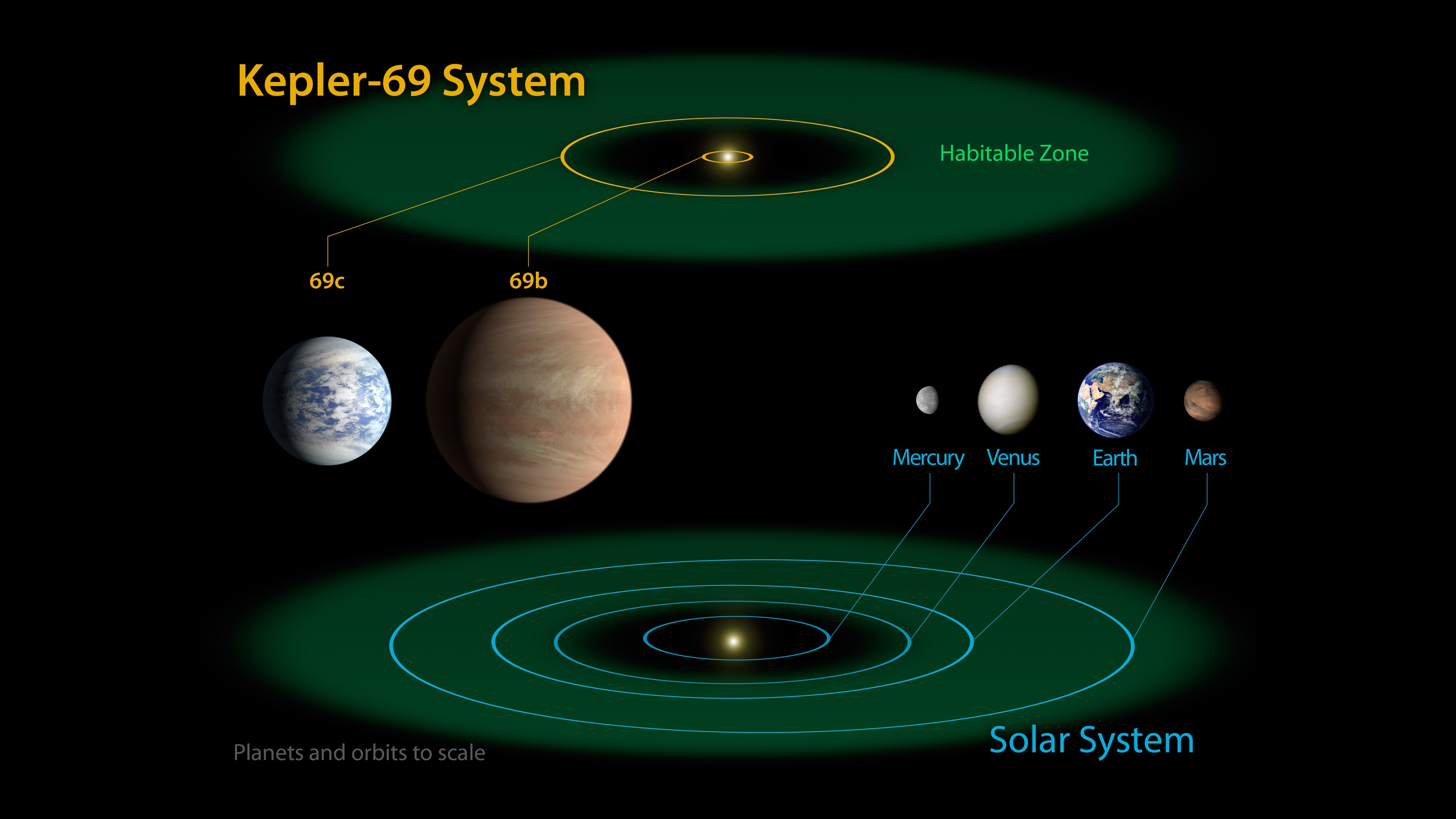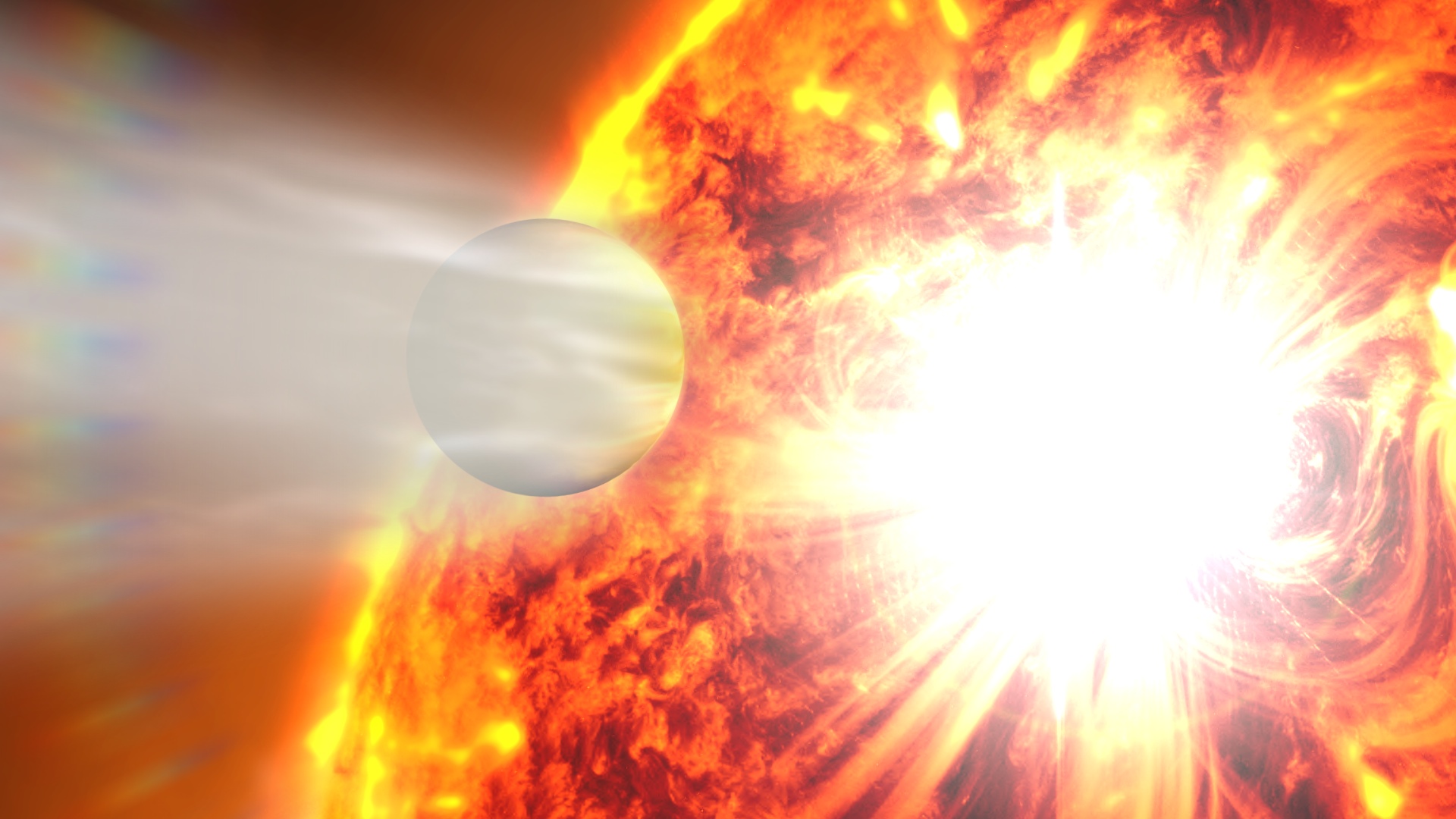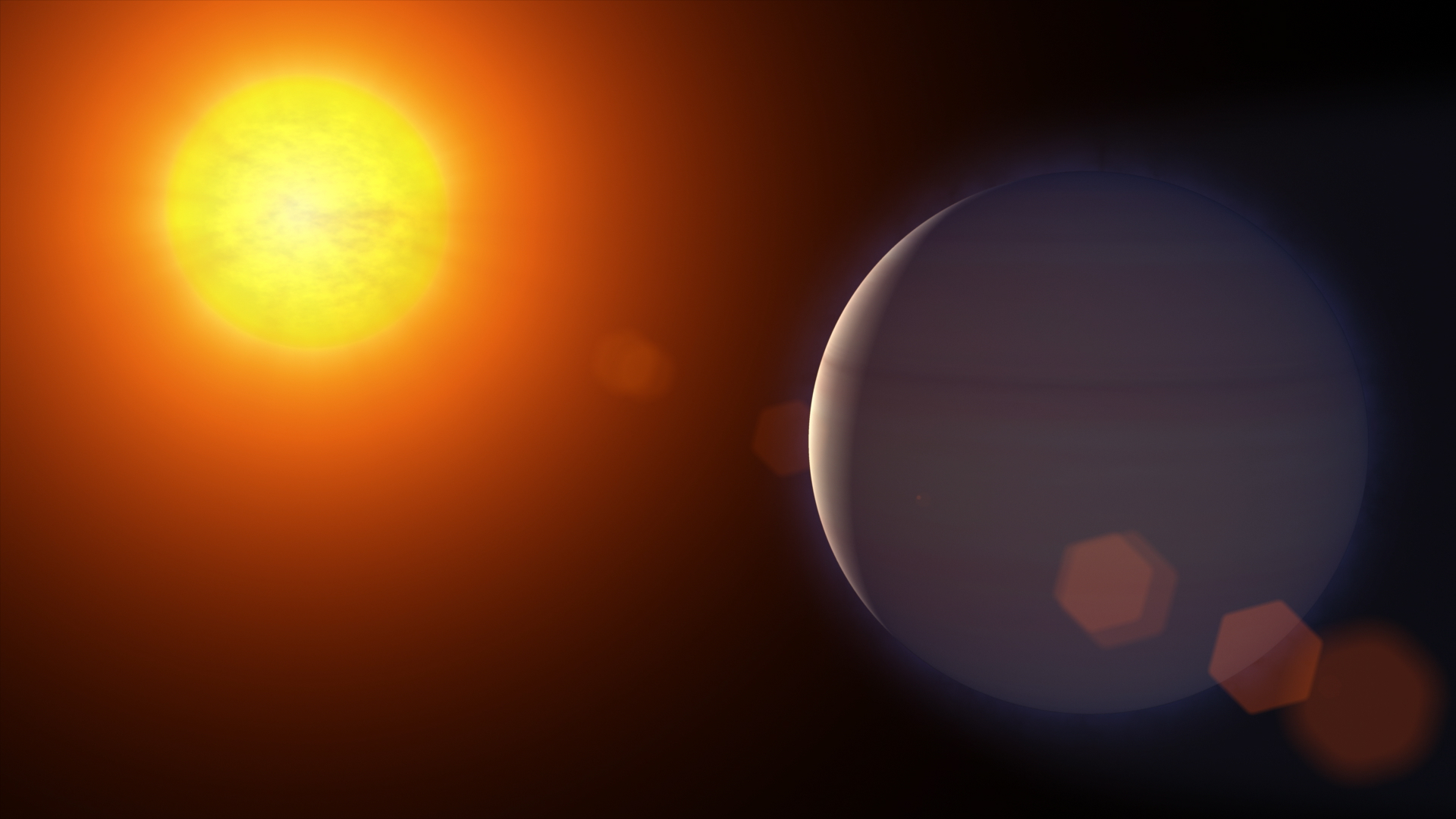Hubble Detects "Sunscreen" Layer on Distant Planet
ANIMATION Using NASA’s Hubble Telescope, scientists detected a stratosphere on the planet WASP-33b. A stratosphere occurs when molecules in the atmosphere absorb ultraviolet and visible light from the star. This absorption warms the stratosphere and acts as a kind of sunscreen layer for the planet below.
Watch this video on YouTube.
Using NASA’s Hubble Space Telescope, scientists have detected a stratosphere, one of the primary layers of Earth’s atmosphere, on a massive and blazing-hot exoplanet known as WASP-33b.
The presence of a stratosphere can provide clues about the composition of a planet and how it formed. This atmospheric layer includes molecules that absorb ultraviolet and visible light, acting as a kind of “sunscreen” for the planet it surrounds. Until now, scientists were uncertain whether these molecules would be found in the atmospheres of large, extremely hot planets in other star systems.
Learn more on NASA.gov.

ILLUSTRATION WASP-33b’s stratosphere was detected by measuring the drop in light as the planet passed behind its star (top). Temperatures in the low stratosphere rise because of molecules absorbing radiation from the star (right). Without a stratosphere, temperatures would cool down at higher altitudes (left).

STILL IMAGE Artist concept of the giant planet WASP-33b transiting its sun, the Delta Scuti variable star WASP-33 (HD 15082).
For More Information
See NASA.gov
Credits
Please give credit for this item to:
NASA/Goddard Space Flight Center Scientific Visualization Studio
-
Animator
- Britt Griswold (Maslow Media Group)
-
Illustrator
- Jay Friedlander (TRAX International)
-
Scientist
- Avi Mandell (NASA/GSFC)
-
Science writer
- Elizabeth Zubritsky (ADNET Systems, Inc.)
Release date
This page was originally published on Friday, June 12, 2015.
This page was last updated on Wednesday, May 3, 2023 at 1:49 PM EDT.

